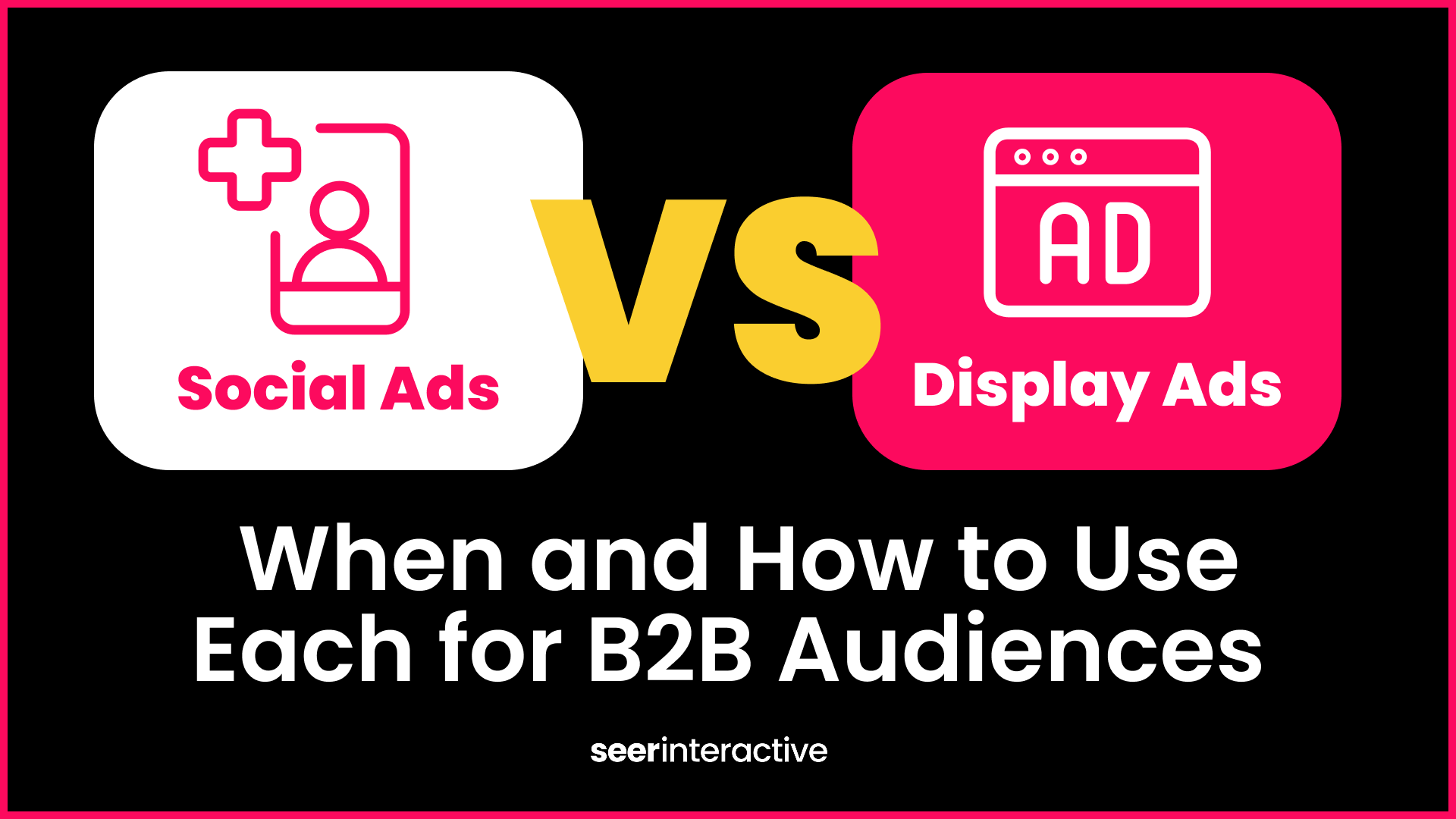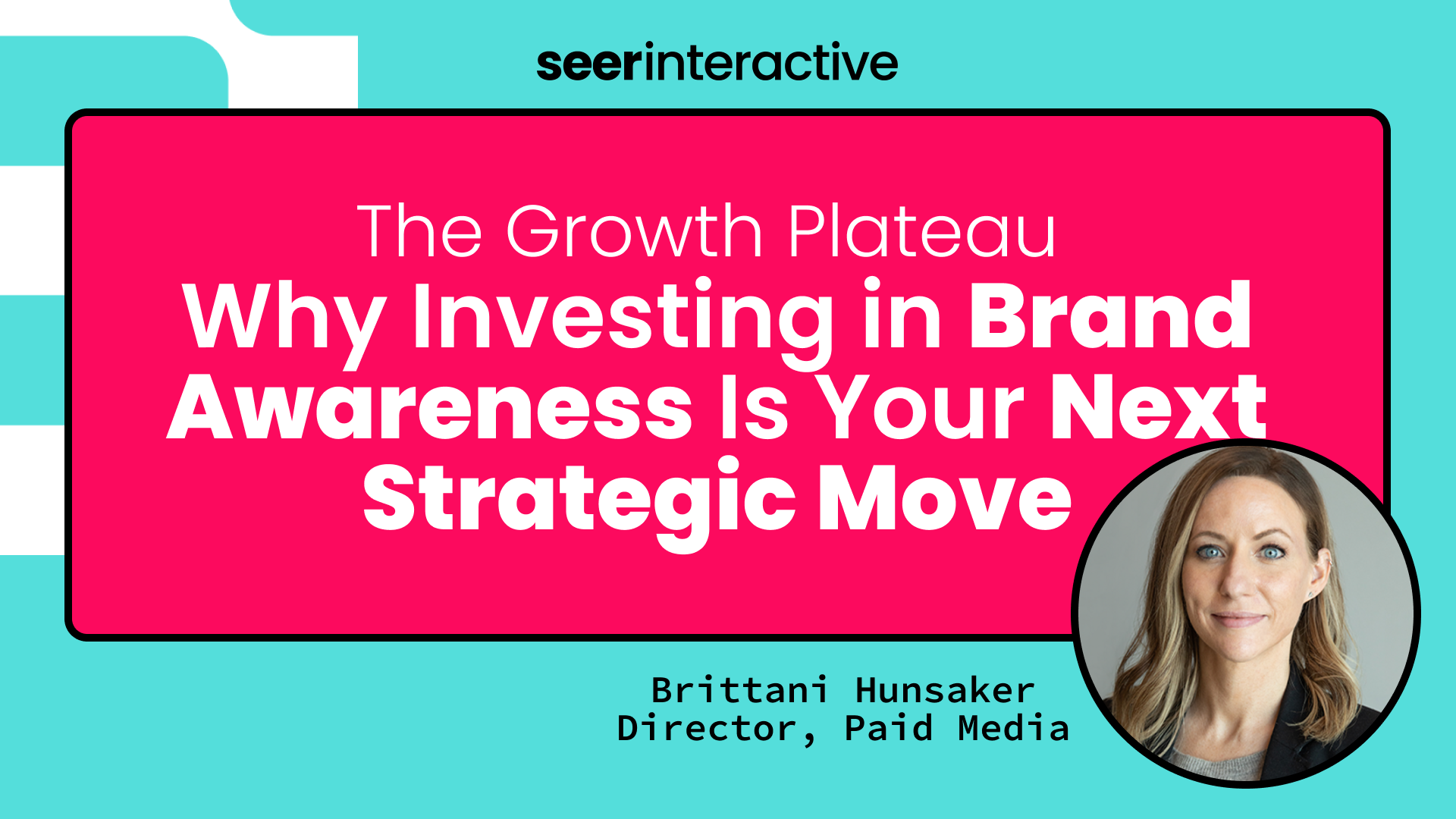PMax Successes Stories
Google released the Performance Max campaign type in June 2021.
At Seer, we’ve tested this campaign type across multiple client industries and gathered insights on the success of various optimization strategies.
Learn about how Performance Max has interacted with existing campaigns and contributed to goals.
A Hero in Ecommerce
eCommerce: Client 1
Strategy
We decided to test Performance Max across our full set of campaigns, with the intent to migrate the entire account to Performance Max (spoiler alert - we didn’t convert the entire account!)
Settings
-
- We started by creating new Performance campaigns instead of leveraging the smart shopping conversion.
- We started with tROAS targets matching the previous campaigns
- We maximized our audience signal with remarketing, custom intent, and in market audiences
Findings
-
- tROAS targets limited Google’s ability to optimize at campaign launch, so we pivoted to launching with Max Conv Value
- After campaigns hit an ideal ROAS, we leveraged tROAS to maintain efficiency
- Search campaigns got more efficient after this launch. Read our hypotheses below!
What's Next
-
- Keeping Performance Max as a mainstay in our strategy
- Testing Performance Max against Standard Shopping to see if we can increase shopping volume through a different campaign type.
eCommerce: Client 2
Strategy
Google announced Smart Shopping campaigns would be migrated to Performance Max as of July 2022. For this ecommerce client, Seer recommend to approach this transition as a phased rollout in the account.
Settings
Customer Acquisition
Bid equally for new & existing customers
[TIP] With Performance Max campaigns, there is an option to exclude existing customer lists and bid-only on new customers.
Audience Signals
-
- Customer Lists
- Landing Page Visitors
- Custom Intent Keywords -- Competitors
- Customer Acquisition
- Audience Signals
- Bid Strategy - Maximize Conversion Value (tROAS)
Findings
The campaign was performing well out of the gate, in terms of revenue volume and ROAS. Google also reported that the performance max campaign generated over $7,309 in revenue from non-brand search terms! This is significantly more than the traditional non-brand paid search campaigns. Ad strength was defined at the highest level of “excellent”.
Seer launched another Smart Shopping campaign on Performance Max since initial performance was strong.
In this instance, Seer used the migration tool vs. launching a net new campaign. Here's why:
-
- Hypothesis: Using the migration tool to convert Smart Shopping campaigns to Performance Max campaigns will reduce the learning phase and lead to higher efficiencies in the short-term.
- Result: Successful - The migrated campaign had a stable ROAS during the first two weeks of the launch (compared to the last two weeks of its smart shopping activity). Additionally, the cost per sale decreased by -14%. Whereas the net-new campaign had a -18% decrease in ROAS with a +12% increase in cost per sale.
What's Next:
Over time, we noticed a shift in overall performance between the two campaigns. One potential factor for the decrease in performance is the launch of the second Performance Max campaign. It appeared that performance started to decline prior to the launch of the medium campaign. Theoretically, these campaigns should not compete so performance should be isolated.
Seer made the recommendation to consolidate these campaigns and the consolidation test was successful at improving performance. ROAS increased by +15%, CPCs decreased by -3%, and revenue increased by +47%.
A Solution in Sensitive Verticals
Psychic Industry: Client 1
Strategy
The goal of launching a Performance Max campaign for this client was to increase web traffic for Tarot readings. The recommendation was to test this within a mid-tier performing campaign with high search interest to avoid cannibalizing top-performing search campaigns.
Settings
Customer Acquisition
Bid equally for new & existing customers.
Audience Signals
-
- Existing Customer Lists
- Custom Intent Keywords
- High search volume keywords recommended by Google and existing Tarot Search campaign top-converting tarot related keywords.
- Google In-Market / Affinity Audiences
- These audiences are related to the client vertical including, social media users, dating service users, beauty & personal care.
- Bid Strategy - Maximize Conversions
Findings
As we’ve encountered with this client’s sister brand, the initial asset strength rating was poor. Seer recommended adding the maximum number of image and video assets to improve quality score
What's Next
Seer is currently testing new image and video creative in an effort to improve ad quality score.
Healthcare Client 1
Strategy
Our healthcare client that helps patients battling addiction needed a way to increase their calls for specific service lines on top of current search efforts
Settings
- We leveraged Performance Max with call extensions & DNI call tracking through Invoca
- We used value modifiers for call duration to signal call quality
- We used tCPA bidding 1 month after launch to bring in conversions more efficiently
Findings
- We found that Performance max operated at a more efficient level, with a 37% lower CPA
- Performance Max’s value per conversion was 8% higher than the account average, showing that conversions were coming in at a high quality
What’s Next
We’ve begun to leverage Performance Max in new programs, and tend to use a methodology of launching on Max conversions, hitting a 20 conversion threshold, and then chipping away at CPA with tCPA until we hit the right mix of efficiency and volume
Healthcare Client 2
Strategy
The initial goal was to bring in incremental conversion volume and clicks for regions that have not been able to spend their full budgets, but after seeing the level of efficiency we decided to launch in additional markets to bring in additional conv. volume at a CPA below what we were seeing in Search.
Findings
- Periodic bid strategy adjustments, primarily to help increase volume when a region is struggling with spending the full budget
- Updated copy for Chicago, Nashville, and Houston with the launch of the Denver, Phoenix, & Philadelphia campaigns. Seer recommended minor ad copy changes including updating 1 headline & 1 description.
- Across all regions, we’ve seen a significant improvement in appointment volume after launching P-Max, most notably in Chicago and Nashville where we’ve historically struggled with volume.
What’s Next
It’s also interesting to see that P-Max tends to behave most like a Display or Video campaign in terms of interaction rate and cost per interaction, while still managing to maintain an even greater level of efficiency than Search across most campaigns.
Overall Thoughts
Overall, Performance Max in its early stages is a volatile campaign type. We’ve seen success in some areas, however, this campaign requires consistent performance review to determine if the strategy is working to achieve goals.
We’ve seen Performance Max drive significant traffic, however, the ability to optimize to achieve a target CPA or ROAS can be difficult without sacrificing volume.
[TIP] Consider testing this campaign type to diversity ad types and drive click traffic in areas where Search is struggling.
Be sure to maximize assets to improve ad quality and regularly test new creative.
Want more posts like this? Subscribe to the Seer Newsletter:


